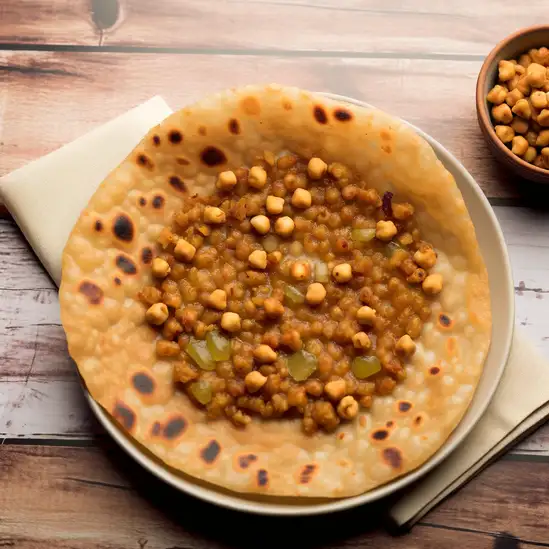



If you ever find yourself wandering through central India,Nagpur Division is a place that quietly steals your heart without shouting for attention. The moment you step into Nagpur,there’s this warm,earthy hum in the air—partly from the bustling markets,partly from the rustling orange groves that surround the city. It’s a city where tradition and modern life blend effortlessly,and you can feel the pulse of everyday life in the chatter of street vendors and the aroma of spicy street food wafting through the air. Walking through Nagpur’s streets,you’ll notice the vibrant colors everywhere—from the bright saris of women to the painted walls of old buildings. The city’s character is deeply rooted in its rich history and cultural tapestry,with temples and colonial architecture standing side by side. But what really makes Nagpur special is its people—warm,welcoming,and proud of their city’s unique identity as the ''Orange City.'' You can’t miss tasting the fresh,juicy oranges or savoring the local delicacies like Saoji chicken,which packs a flavorful punch that lingers long after your meal. Beyond the city,the surrounding division offers lush forests and serene lakes,perfect for a quiet escape or a nature walk. Whether you’re exploring the bustling bazaars or watching the sunset over the quiet lakes,Nagpur Division invites you to slow down,breathe in the mix of spices and earth,and soak up a slice of life that feels both timeless and alive.
The information on this page is currently being reviewed by Tripkliq and should be used as a guide only
Eng word: Hello
Eng pronunciation: Namaskar
Local language: नमस्कार
Eng word: Goodbye
Eng pronunciation: Niroop
Local language: निरोप
Eng word: Thank you
Eng pronunciation: Dhanyawad
Local language: धन्यवाद
Eng word: How much
Eng pronunciation: Kiti
Local language: किती
Eng word: Toilet
Eng pronunciation: Shauchalay
Local language: शौचालय
Eng word: Help me
Eng pronunciation: Madat Kara
Local language: मदत करा
Eng word: Yes
Eng pronunciation: Hoy
Local language: होय
Eng word: No
Eng pronunciation: Nahi
Local language: नाही
Eng word: Excuse me
Eng pronunciation: Maaf Kara
Local language: माफ करा
Nagpur is famously known as the 'Orange City' due to its high-quality orange production. The city has been a major hub for orange cultivation for centuries, making it a must-visit destination for fruit lovers and agricultural enthusiasts.
Nagpur is home to the Zero Mile Stone, which marks the geographical center of colonial India. This historic monument was built by the British and is a significant landmark for geography enthusiasts and history buffs.
Deekshabhoomi is a sacred monument where Dr. B.R. Ambedkar and his followers embraced Buddhism in 1956. It is one of the largest stupas in Asia and a symbol of equality, peace, and social reform.
Built in 1817, Sitabuldi Fort is a historic site that played a significant role during the Third Anglo-Maratha War. Today, it stands as a reminder of Nagpur's rich military history and offers panoramic views of the city.
Nagpur was an important city under the rule of the Bhonsle dynasty of the Maratha Empire. The city flourished as a center of trade, culture, and administration during their reign.
Named after Nobel laureate C.V. Raman, the Raman Science Centre in Nagpur is a hub for science and technology enthusiasts. It showcases the city's commitment to education and innovation.
Nagpur derives its name from the Nag River, which flows through the city. The river has historical and cultural significance, and its serpentine shape is believed to have inspired the city's name.
Established in 1863, the Central Museum of Nagpur is one of the oldest museums in India. It houses a rich collection of artifacts, including ancient coins, sculptures, and fossils, offering a glimpse into the region's history.
Nagpur was once known as the 'Empress City' during British rule, as it was a major administrative and commercial center. The city's colonial architecture and planning reflect its historical importance.
In Nagpur Division, the most common Power Adaptor is Type C, Type D, Type M.







A fragrant rice dish cooked with marinated meat or vegetables, flavored with spices, and often served with raita.

A traditional sweet flatbread stuffed with a mixture of jaggery and split yellow gram, often enjoyed during festivals and special occasions.

A type of unleavened flatbread made from coarse flour, typically served with spicy curries or chutneys.

Famous for its sweetness and juiciness, Nagpur oranges are a popular citrus fruit that is enjoyed both locally and exported.

A popular breakfast dish made of flattened rice (poha) served with a spicy curry (tarri) made from chickpeas, garnished with onions and coriander.

A savory snack made from gram flour and fresh coriander leaves, steamed and then shallow-fried, often served with chutney.

A spicy curry made from sprouted lentils, served with bread rolls (pav) and topped with onions, lemon, and sev.

A dish made from tapioca pearls, cooked with peanuts, potatoes, and spices, often consumed during fasting.
Imagine stepping into a city that pulses with energy,where every street corner hums with life and stories waiting to be discovered—that’s Mumbai for you. The moment you arrive,you’re wrapped in a vibrant tapestry of sounds:the rhythmic clatter of local trains,the lively chatter of street vendors,and the distant call of temple bells blending with honking rickshaws. The air carries a mix of spices from roadside stalls,mingling with the salty breeze from the Arabian Sea,creating an intoxicating scent that’s uniquely Mumbai.
Walking through its bustling lanes,you’ll see a kaleidoscope of colors—bright saris fluttering in the wind,intricate colonial architecture standing proudly beside sleek skyscrapers,and street art that tells tales of the city’s soul. Mumbai’s character is a beautiful contradiction:it’s fast-paced yet welcoming,chaotic yet deeply rooted in tradition. The city’s heartbeat is its people—dreamers,artists,and entrepreneurs who wear their resilience and warmth like a badge of honor.
And then there’s the food—oh,the food! From the tangy,spicy street-side vada pav that feels like a warm hug,to the rich,aromatic biryanis and fresh seafood by the sea,every bite is a celebration of flavors. Mumbai invites you to lose yourself in its maze of neighborhoods,each with its own rhythm and charm,promising moments of surprise and connection. It’s not just a place to visit; it’s a city that stays with you long after you’ve left.
Imagine stepping into a place where the sun kisses your skin,the salty breeze carries the laughter of beachside chatter,and every corner hums with a laid-back yet vibrant energy—that’s North Goa for you. It’s a lively patchwork of golden sands,swaying palms,and colorful shacks where the aroma of sizzling seafood mingles with the faint scent of frangipani flowers. Whether you’re wandering through the bustling markets of Anjuna or watching the sun dip behind the waves at Calangute,there’s a rhythm here that feels both timeless and alive.
What really makes North Goa special is its blend of cultures and carefree spirit. You’ll find Portuguese-influenced architecture standing proudly alongside lively street art,while the music—from mellow acoustic sets to pulsing electronic beats—drifts through the air,inviting you to join in. The locals,warm and welcoming,add a genuine charm that makes you feel like you’re part of a big,sun-soaked family.
And the flavors! Freshly caught fish grilled with spices that tease your taste buds,tangy Goan curries,and sweet,creamy feni that’s perfect for toasting to new adventures. As night falls,the beach transforms into a playground of bonfires and music,where stories flow as freely as the ocean breeze. North Goa isn’t just a destination; it’s a feeling—a place that stays with you long after you’ve left.
A historic port city in Kerala,Kochi is famous for its backwaters,Fort Kochi,and nearby islands like Vypin and Willingdon,offering a blend of natural beauty and cultural heritage.
ExploreIf you ever find yourself craving a place where the ocean breeze carries stories of adventure and the rhythm of waves sets your pace,Port Blair is where you want to be. This city feels like a gentle invitation to slow down and soak in the raw beauty of island life. The moment you step off the ferry or plane,the salty air mingled with the scent of tropical flowers wraps around you like a warm hug. Palm trees sway lazily against a backdrop of turquoise waters,and the chatter of locals blends with the distant call of seabirds,creating a soundtrack that’s both lively and soothing.
Port Blair isn’t just a gateway to the Andaman Islands; it’s a place where history whispers through the walls of the Cellular Jail,a somber yet inspiring reminder of India’s past. But beyond its historical weight,the city pulses with a laid-back charm—colorful markets burst with fresh seafood,exotic fruits,and spices that tease your senses. Grab a plate of freshly caught fish grilled with local herbs,and you’ll taste the ocean’s essence in every bite.
What makes Port Blair truly special is its blend of cultures and the warmth of its people. You’ll find a mix of indigenous traditions and influences from across India,all coexisting in a relaxed,welcoming vibe. Whether you’re wandering along Corbyn’s Cove Beach at sunset or chatting with fishermen mending their nets,there’s a genuine friendliness here that makes you feel like you belong. It’s a place that invites you to explore,reflect,and simply be.
A charming coastal city with French colonial architecture,Pondicherry offers access to nearby islands and tranquil beaches,making it a unique blend of history and relaxation.
ExploreImagine stepping into a place where the ocean’s turquoise hues stretch endlessly,and the gentle hum of waves lapping against coral reefs becomes your daily soundtrack—that’s Lakshadweep for you. This cluster of islands feels like a serene escape from the world’s rush,where time slows down and the air carries a salty freshness mixed with the faint scent of coconut palms. Walking along the powdery white beaches,you’ll notice the vibrant marine life just beneath the surface,inviting you to dive in and explore a kaleidoscope of colorful fish and coral gardens.
What truly sets Lakshadweep apart is its intimate connection to the sea and the warm-hearted islanders who live in harmony with nature. The culture here is deeply rooted in simple,joyful traditions—imagine sharing freshly caught seafood grilled over open flames,flavored with local spices that tease your taste buds,while the sun dips below the horizon in a blaze of orange and pink. The islands’ laid-back vibe encourages you to slow down,breathe deeply,and savor moments of quiet beauty.
Beyond the beaches,the islands offer a glimpse into a unique way of life shaped by the ocean’s rhythms. You’ll find small villages where fishing boats bob gently in the harbor,and children’s laughter mingles with the calls of seabirds overhead. Lakshadweep isn’t just a destination; it’s a feeling—a peaceful,soulful retreat that stays with you long after you leave.
Tourists are sold fake or low-quality handicrafts and souvenirs at high prices, claiming they are authentic and locally made.
Scammers pose as representatives of charities or orphanages, emotionally manipulating tourists into donating money to fake causes.
Scammers sell fake tickets for local attractions, events, or transportation, leaving tourists stranded or denied entry.
Scammers pose as tour guides and offer to show tourists around, charging exorbitant fees for subpar or fake services.
Tourists are convinced to buy 'precious' gemstones at inflated prices, which turn out to be fake or of low value.
Tourists are lured into booking non-existent or substandard hotels through fake websites or agents, losing money in the process.
Drivers may refuse to use the meter and charge tourists inflated fares, especially near railway stations, bus stops, and tourist attractions.
Thieves use distractions, such as spilling something on the tourist or creating a commotion, to steal wallets, phones, or other valuables.
Fraudsters approach tourists near temples or religious sites, offering blessings or rituals for a fee, which turns out to be a scam.
Unregistered operators offer cheap tour packages, but fail to deliver on promises, leaving tourists stranded or disappointed.
The use, possession, sale, and distribution of narcotic drugs and psychotropic substances are strictly prohibited under the Narcotic Drugs and Psychotropic Substances (NDPS) Act,1985. Penalties for violations are severe and can include heavy fines and imprisonment. Tourists should avoid any involvement with illegal drugs and exercise caution to ensure they do not inadvertently carry prohibited substances.
Smoking in public places is prohibited in Nagpur Division, as per the Cigarettes and Other Tobacco Products Act (COTPA),2003. Public places include workplaces, public transport, and recreational areas. Designated smoking zones may be available in some hotels and restaurants. Violators can face fines. Tourists should also avoid smoking near schools, hospitals, and religious places, as it is considered disrespectful.
Vaping is banned across India, including Nagpur Division, under the Prohibition of Electronic Cigarettes Act,2019. The sale, production, import, export, distribution, and advertisement of e-cigarettes are prohibited. Possession or use of vaping devices can lead to fines or imprisonment. Tourists should refrain from carrying or using vaping products in the city.
What are other people saying about Nagpur Division?
Recent Social posts about Nagpur Division
There is nothing to show you for now.